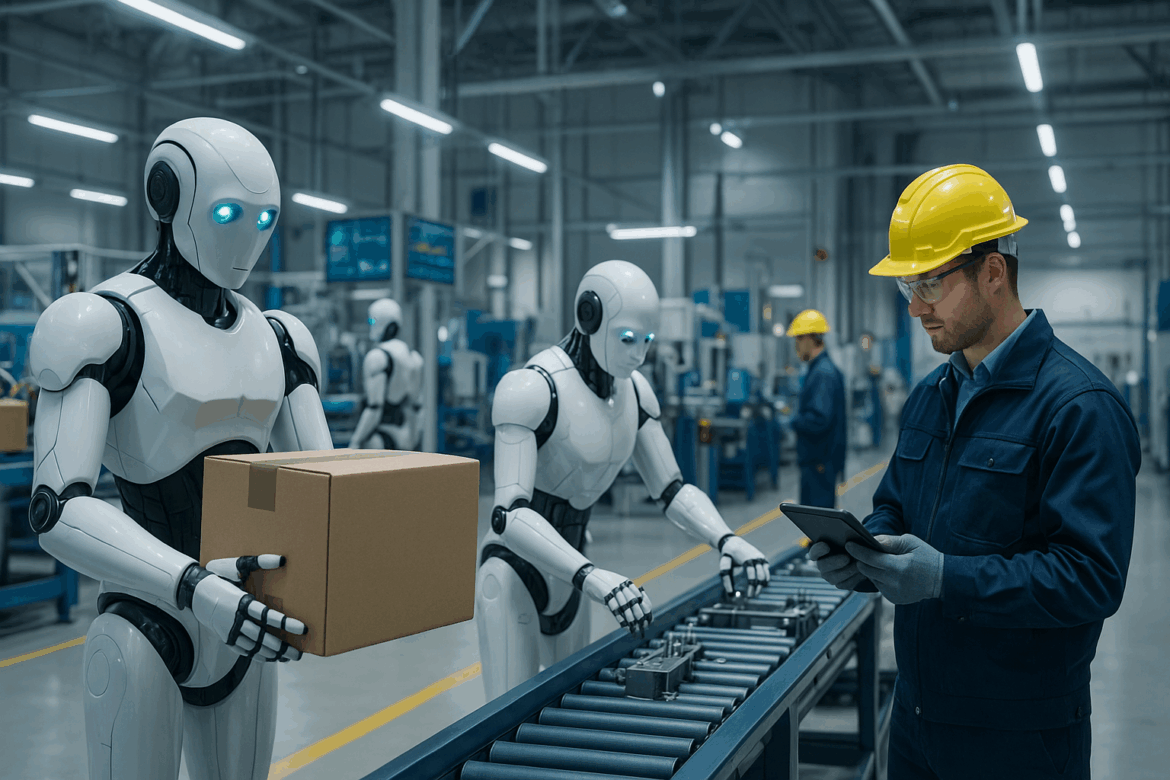Humanoid robots – those that resemble humans in appearance and movement – have stepped out of the realm of fiction. In 2025, these robots have an impact on actual jobs such as helping in factories, taking care of older people, and even assisting shoppers in stores.
Let’s explain in simple terms where and how people use these robots today.
🧍♂️ What Are Humanoid Robots?
Humanoid robots are machines that look like people. They have:
- A head, arms, and legs
- Eyes (cameras) to see
- Motors and sensors to move and respond
These robots are designed to function in human-built environments – such as climbing stairs, using tools, or navigating around people.
🏭 Where Are These Robots Being Used?
1. Factories and Warehouses
Robots like Tesla’s Optimus or Hyundai’s Atlas have applications in factories to:
- Transport items
- Support product manufacturing
- Perform repetitive tasks
Humans often find these jobs monotonous or exhausting so robots help to lessen the workload and boost production rates.
2. Shops and Malls
Some stores use humanoid robots to welcome customers, respond to inquiries, and clean floors. These robots can:
- Talk in many languages
- Know what shoppers want
- Point the way and give advice
This makes shopping better.
3. Hospitals and Elderly Care
Some robots help look after patients or older folks by:
- Telling them when to take pills
- Helping them get around
- Chatting with them so they’re not lonely
For instance, a robot named Grace is made just for caring for older people.
4. Schools and Events
In places like China, human-like robots show up at:
- School graduation parties
- Public gatherings like fairs or tech shows
- Libraries and airports to help people find their way
They chat, give directions, and sometimes even make speeches!
🚀 What’s Behind the Rise of Humanoid Robots?
Here’s why more companies are putting them to work in 2025:
- Brainier Bots: AI has given robots the ability to grasp speech, videos, and images, which makes them way smarter.
- Smoother Moves: Robots can now walk, turn, and get around even on tricky surfaces like stairs or uneven ground.
- Not Enough People: Many industries are short on workers. Robots step in to fill these gaps.
- Budget-Friendly Choices: You can now rent a robot monthly (they call it Robotics-as-a-Service) making it more affordable for smaller businesses.
👷 Are Robots Going to Take Over Our Jobs?
Not . Humanoid robots aim to assist humans, not take their place.
They handle:
- Risky jobs
- Dull or repetitive work
- Tasks that need heavy lifting
This lets humans concentrate on creative and significant work that robots can’t perform.
✅ Final Thoughts
Humanoid robots aren’t just fancy gadgets anymore—they’ve become actual assistants in our day-to-day jobs. These robots are lending a hand to people and shaking up our work routines, from factories to hospitals.
As AI and tech keep getting better, we can expect to see more of these robots right next to us at work making things easier and safer for everyone.
